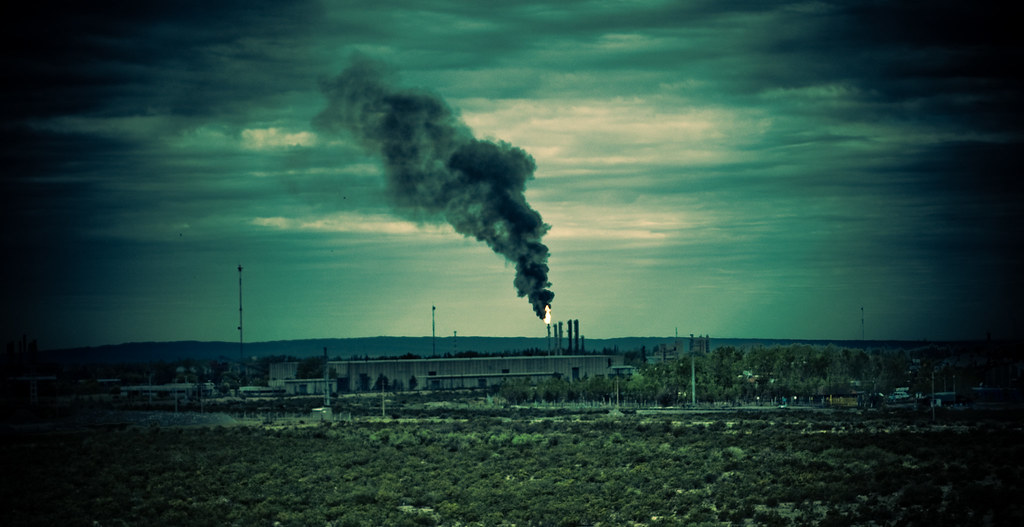RDP Trump Environment Tracker
April 10, 2025
Blog Post
|
April 10, 2025

Trump’s War On Our Environment: Tracking Cuts, Rollbacks and Likely Harmful Impacts
Trump’s second term began with drastic announcements on Day One and has been chaotic every day since. It can be overwhelming to try to keep up with the cuts to environmental funding, rollbacks to critical regulations, and track the thousands of staff across agencies who have been fired from their roles. The purpose of this tracker is to monitor some of the most important tangible increases in pollution and environmental and health harms caused by the Trump administration’s actions.
Many resources already exist in this vein:
- Columbia Climate BackTracker – government-wide tracker of the scaling back and elimination of climate regulations
- Old Columbia tracker from first Trump administration
- Climate Action Campaign Trump’s Climate and Clean Energy Rollback Tracker – thorough rollback tracker
- Harvard Environmental & Energy Law Regulatory Tracker – regulatory and litigation tracker
- Environmental Integrity Project – big picture EPA updates
- NYU Law State Impact Center Plastics Litigation Tracker – plastics litigation
- ProPublica summary on EPA rollbacks that will impact air pollution as of February 5, 2025
- Air quality tracker over time from EPA
Note: Tracking effects of these changes will likely become more difficult – greenhouse gas emission data is under threatdue to Trump
Specific examples of harmful Trump administration actions – last updated March 26, 2025
Funding cuts for projects in communities across the country
Unleashing American Energy Executive Order ordered an end to funding for an array of climate, environmental, and pollution reduction projects. Courts have responded with challenges and orders to unfreeze this money, but the federal government is ignoring these orders in many cases and the future of thousands of critical projects is uncertain.
- Blocked funding that was being disbursed to farmers, cities, and Native American tribes to offset conservation efforts of water in the Colorado River and improve water quality in its tributaries. This freeze will accelerate the shrinking of the river’s water supply and increase pollution in the water, which provides drinking water for one in ten Americans and a huge percentage of water needed for farming and raising cattle.
- Blocked funding to a non-profit group in New Orleans that plants trees around the city, especially attempting to replace trees lost in hurricanes over the past two decades. The city has one of the lowest tree canopy rates in the country and suffers as a result – sufficient tree cover makes a tangible difference in ambient temperature, air conditioning costs, air quality, and flood resilience. The non-profit that takes on most of this work has had to cancel contracts for tree seedlings and rescind job offers as a result of the funding freeze. This is only one example of many cities that lost funding for tree planting.
- Blocked funding for school districts such as Ritenour School District in St. Louis, MO who had been promised money to replace their entire fleet of diesel school buses with electric school buses. Diesel exhaust increases cancer and asthma risk, is linked to negative cognitive developmental impacts, and emits high levels of CO2 into the atmosphere.
- The Council on Environmental Quality (CEQ) published an interim rule to remove regulations implementing the National Environmental Policy Act (NEPA) in response to this executive order. This will result in inconsistent permitting processes across agencies and less thorough environmental review for proposed infrastructure projects.
Employee firings
- Demotions at EPA from principal deputy assistant administrator (second in command) to deputy assistant administrator (lower down) in the Office of Research and Development, Office of Enforcement and Compliance, Office of Land and Emergency Management (oversees cleanups of contaminated lands and responds to environmental emergencies, and Office of Mission Support (human resources and grants and contracts). Replacing professionals with fossil fuel friendly political appointees will almost certainly lead to private profits over the safety of the broader public – check back to see the likely tragic implications play out.
- Employee firings and potential closures of NOAA facilities. At least 800 workers have been fired, meaning the people who monitor the intensifying climate change-driven storms will struggle to adequately monitor, predict, and communicate the dangers to American residents. This will be especially dangerous for hurricanes, tornadoes, and fires characterized by rapid intensification.
New fossil fuel projects and end of renewable projects
- Trump ordered rapid fossil fuel expansion and prioritization of LNG projects in Alaska. The main Alaska LNG project in question would result in over 50 million metric tons of CO2 emissions annually, threaten wetlands, forests, and permafrost habitats, and threaten endangered species including beluga whales, polar bears, and caribou.
- End of offshore wind leasing. Wind power currently provides for 10 percent of the nation’s electricity. A 2024 study found that developing 32 planned or proposed offshore wind farms in the Atlantic and Gulf would lead to a decrease in emissions and pollution such that they would prevent 2,100 premature deaths each year, have a 14:1 benefit to cost ratio, reduce U.S. emissions by 5 percent by 2035 and improve fine particulate air quality by 5 percent, and decrease electricity and gas bills. These benefits will be off the table with Trump’s new order.
- DOE Secretary Chris Wright issued an export authorization for the Commonwealth LNG project in Cameron Parish, Louisiana that will have an export capacity of 1.2 billion cubic feet per day. This project is predicted to add 3.6 million tons of greenhouse gases to the atmosphere every year, the equivalent of adding 700,000 new cars to the road, and release over 500 tons of nitrogen dioxide per year, a dangerous air pollutant. Low-level exposure to nitrogen dioxide irritates the eyes, nose, throat, and lungs, leading to coughing, shortness of breath, tiredness, and nausea. High levels of nitrogen dioxide exposure can cause rapid burning, spasms, and swelling of tissues in the throat and upper respiratory tract, reduced oxygenation of body tissues, a build-up of fluid in the lungs, and death. Longer term exposure to elevated levels of nitrogen dioxide could contribute to asthma and increase susceptibility to respiratory infections. People with asthma, children and the elderly are particularly vulnerable to the health effects of nitrogen dioxide.
- Trump ordered “immediate expansion” of American timber production across 280 million acres of forest. This order also directs the circumventing of critical endangered species protections for over 400 species using unspecified emergency powers. A single tree is understood to store as much as 28,000 pounds of CO2 in its lifetime, so this order will increase the amount of CO2 in the atmosphere, endanger critical species, and increase fire risk.
- Trump ordered “immediate measures” to increase American mineral production, which he says will create jobs and fuel prosperity. This executive order directed each department or agency head involved in the permitting of mineral production to identify within 10 days priority projects that can be immediately approved or expedited. While some minerals are critical to certain renewable energy goals, the process of mining requires significant water resources, produces toxic, radioactive, or acidic substances, significantly impacts the land including deforestation, and has a greenhouse gas emission footprint of its own. And it is hard to understand why mining “gold” is critical in the 21st Century.
- Trump signed a joint resolution to overturn a Bureau of Ocean Energy Management rule titled “Protection of Marine Archaeological Resources” that required new oil and gas leases on the outer continental shelf to submit a marine archaeological report. This resolution was overturned because it had “imposed compliance costs on energy producers.”
Air pollution
- Trump’s DOJ dismissed a lawsuit against the operators of a synthetic rubber plant in Louisiana for its release of chloroprene, a likely human carcinogen. This was a landmark environmental justice case seeking to improve air quality in Cancer Alley, the stretch of land between New Orleans and Baton Rouge that has extremely high cancer rates due to the petrochemical plants that pollute the air. Unchecked, this chemical plant (and many others like it in the area) will continue to release carcinogenic pollutants into the air that Louisiana residents, many of them Black and poor, are forced to breathe.
- The State Department ended air quality monitoring at 80 embassies and consulates abroad. This data was used primarily to track air pollution in areas U.S. officials worked, but also benefited global coordination of air quality measurement and anti-pollution efforts.
- Trump signed a joint resolution of disapproval under the Congressional Review Act (CRA) into law that voided the EPA’s final rule on methane waste emissions. This removes a fine system that would charge large emitters of methane waste that exceeded certain emission levels set by Congress. Methane gas is responsible for 20-30% of global heating since the Industrial Revolution. The rule, which Democrats passed late enough that it could be easily repealed using the CRA, had not gone into effect, but would have applied to roughly a third of the methane emissions that come from oil and gas infrastructure in the U.S and diverted 1.2 million metric tons of methane through 2035, the equivalent of taking nearly 8 million gas-powered cars offline for a year. Methane is a major contributor to climate change as it is 28 times more effective at trapping heat in the atmosphere than carbon dioxide. Additionally, when methane is leaked, it releases other pollutants like volatile organic compounds (VOCs). Breathing in VOCs can cause cancer, affect the nervous system, and cause birth defects. Everyone is vulnerable to breathing in VOCs because they can travel far from source.
Transportation
- Changed criteria for a transportation funding grant program so it now penalizes projects that aim to reduce driving, increase electrification, or incentivize walking and biking, while favoring highway expansion projects. Highway expansions are always a negative for increased CO2 emissions and air and noise pollution for those living nearby. Highway expansions will put more people at risk of developing respiratory illnesses and cancer due to greater exposure to traffic-related air pollution from cars and trucks. Racist interstate citing policies in the 1960s and 1970s led to major highways cutting through Black and Latinx neighborhoods. As a result, those communities are more likely to live near highways and bear the disproportionate health impacts of traffic pollution. Highway expansions (especially under Trump) will continue to disproportionately impact BIPOC communities.
Energy efficiency
Trump rescinded two orders made under Biden that determined renewable energy resources, including solar panel components and heat pump technology, were critical to national security and therefore deserved federal resources under the Defense Production Act. Keeping renewable energy costs low helps people save on utility bills, which have gone up 51% since 2019. Investing in renewable energy sources like solar is likely to increase a home’s value which benefits homeowners in the long run. As showcased during Winter Storm Elliott, America’s fossil fuel-powered energy grid is becoming more unreliable, leading to outages and grid failures during extreme weather events. Using renewable energy can build out a clean, more reliable electricity grid which will benefit everyone by reducing the likelihood of power outages and disruptions.
“pollution!” by aguscr is licensed under CC BY 2.0.
Related Articles
Search
RECENT PRESS RELEASES
Related Post




